The crabs who ate Christmas
Baby there's crabs outside

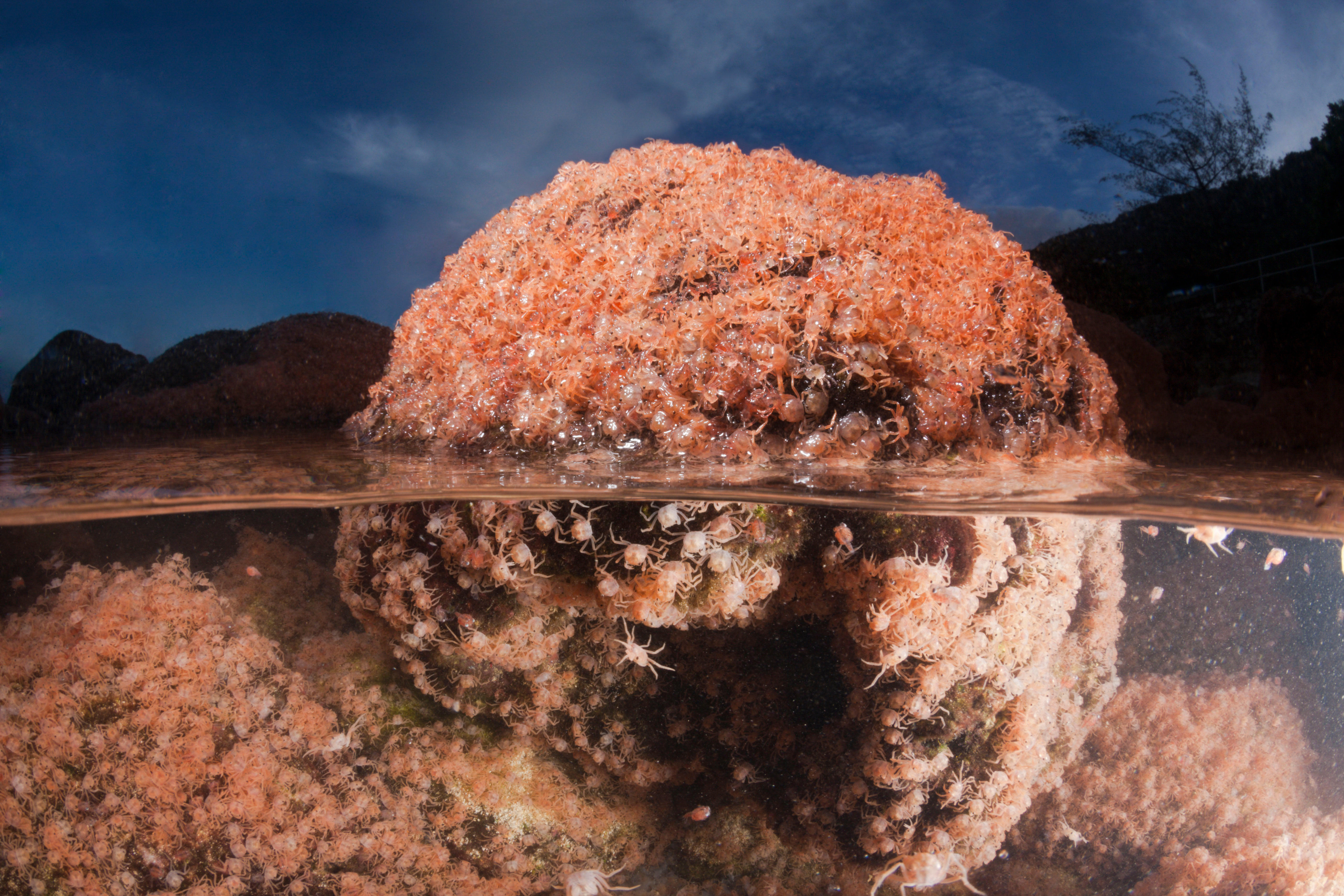
Christmas Island — a tiny Australian territory in the Indian Ocean, about 500 miles south of Indonesia — was named by an English captain who happened to spot it on Dec. 25, 1643.
But the island boasts another festive source for its name: At the end of every year, a rare phenomenon sweeps over its natural green terrain, turning it bright red.
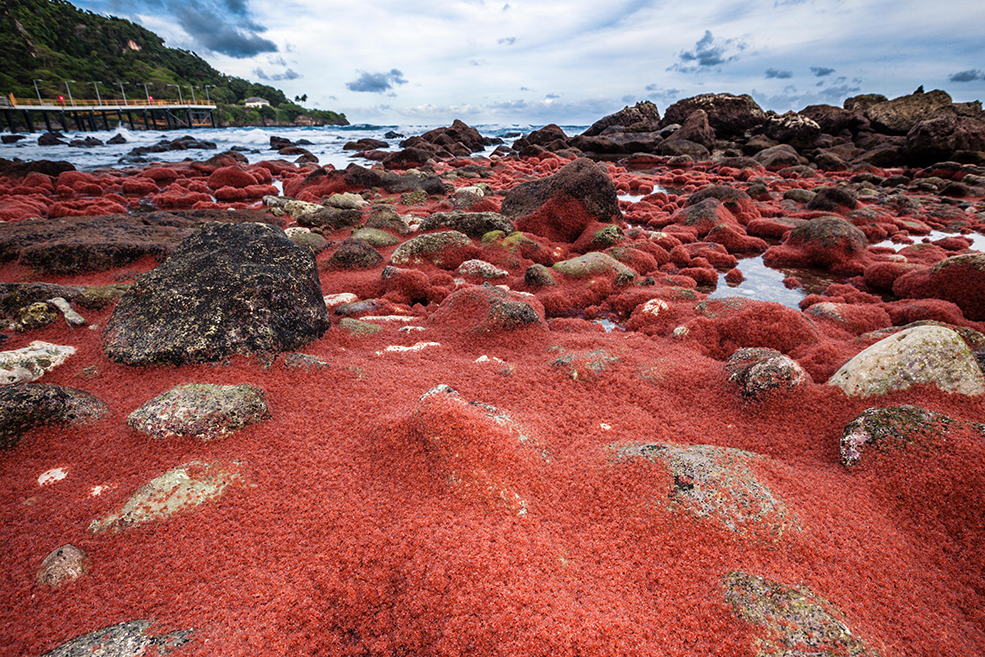
Alongside a plethora of exotic tropical creatures and about 2,000 humans, Christmas Island is home to a whopping 50 million bright red land crabs — called the Gecarcoidea natalis — that exist nowhere else in the world.
These large arthropods live out most of their days in shady coves within the island's dense forests, but each year, they make one epic journey from the inner jungles to the coast. Because their larvae cannot survive outside water for the first few weeks after hatching, the terrestrial crabs must trek out to the ocean to breed and spawn. During this mass migration, the island's streets, sidewalks, and beaches are blanketed in crimson claws."They swarm over the island, across roads, through homes and schools, under every foot, every tire, inside unattended shoes and covering every surface available," Atlas Obscura reports.
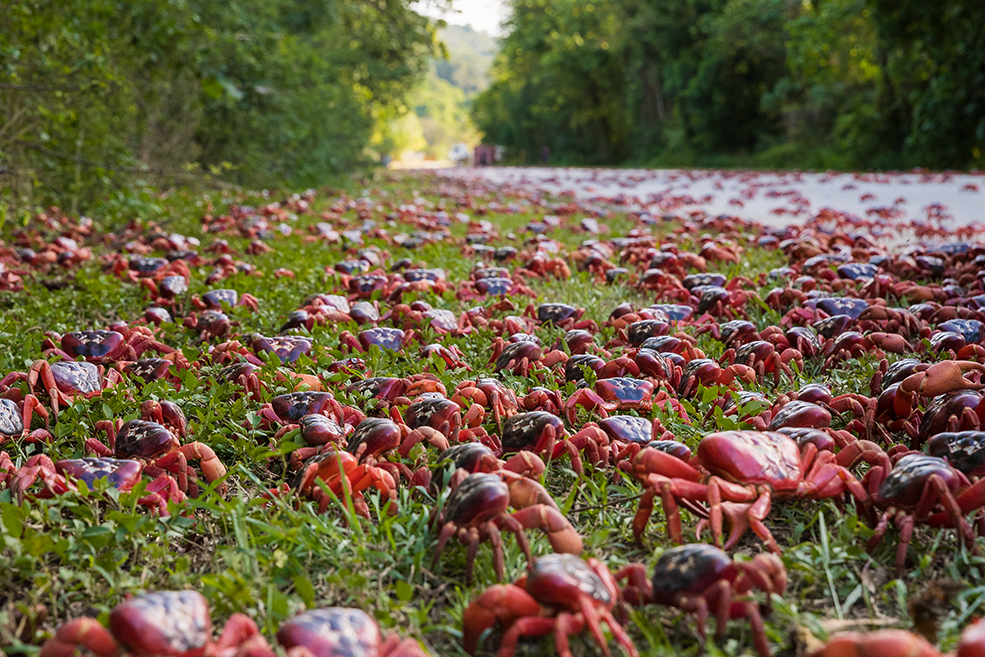
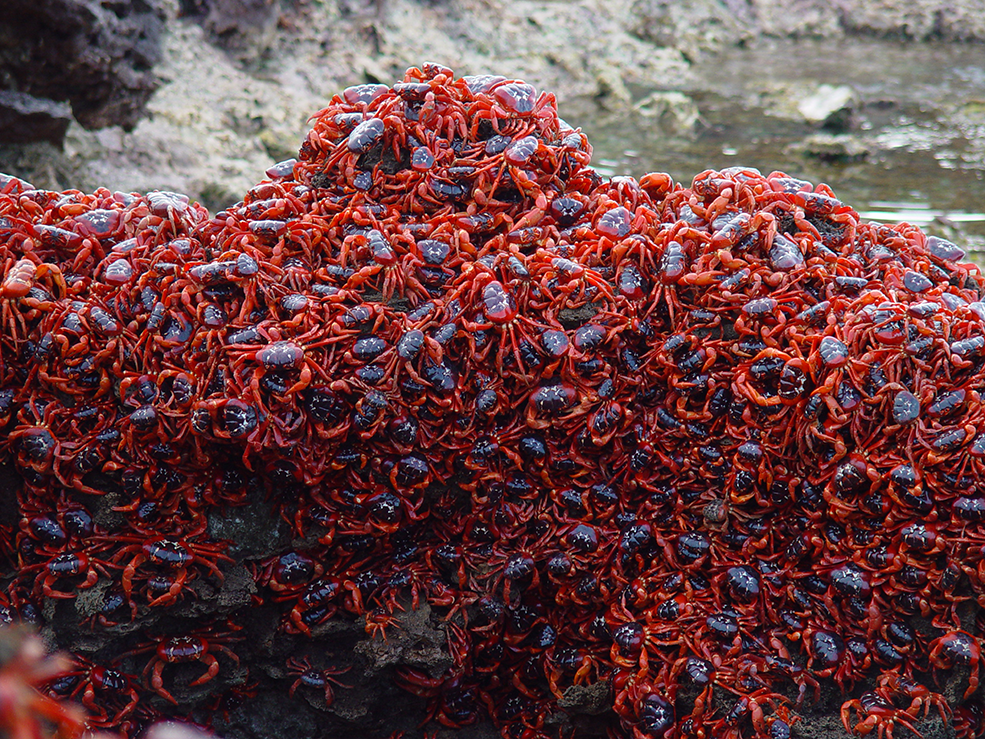
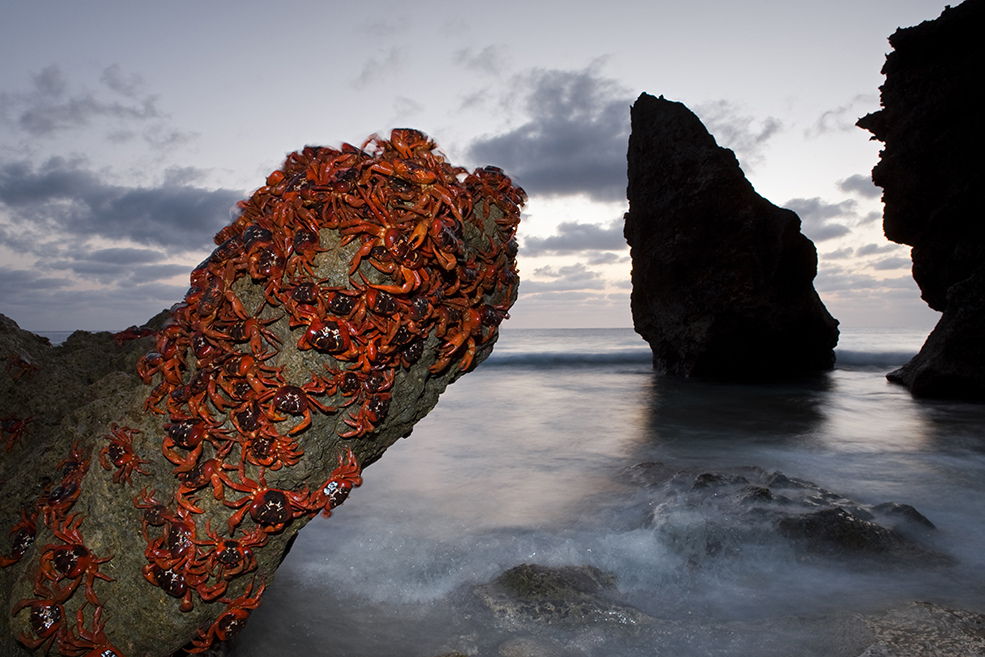
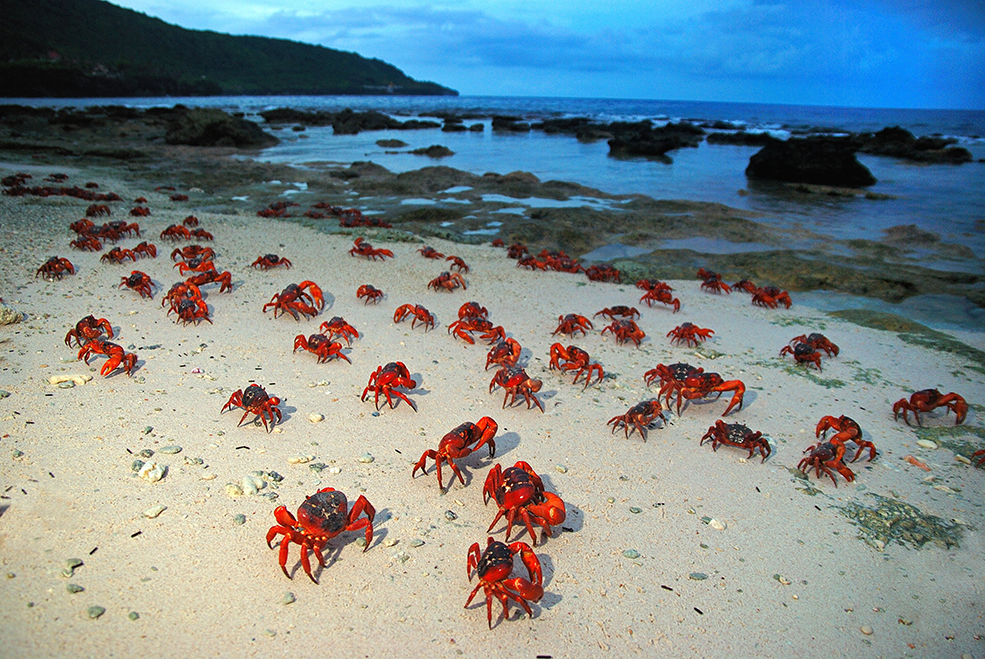
The annual event begins with the start of the wet season, usually around October or November, with the male crabs journeying out to stake out a good spot and the female crabs following soon after. The entire pilgrimage can take up to 18 days and can often be a dangerous journey for the crabs, facing poisonous ants, racing cars, and swaths of concrete or wide-open fields where they can overheat and die of dehydration under the burning sun.
The locals do their best to help their tiny, clawed neighbors. They have built "crab crossings" — bridges that go over or tunnels that pass under busy streets where crab traffic is particularly high. Sometimes entire roads get closed down to allow for their safe passage.
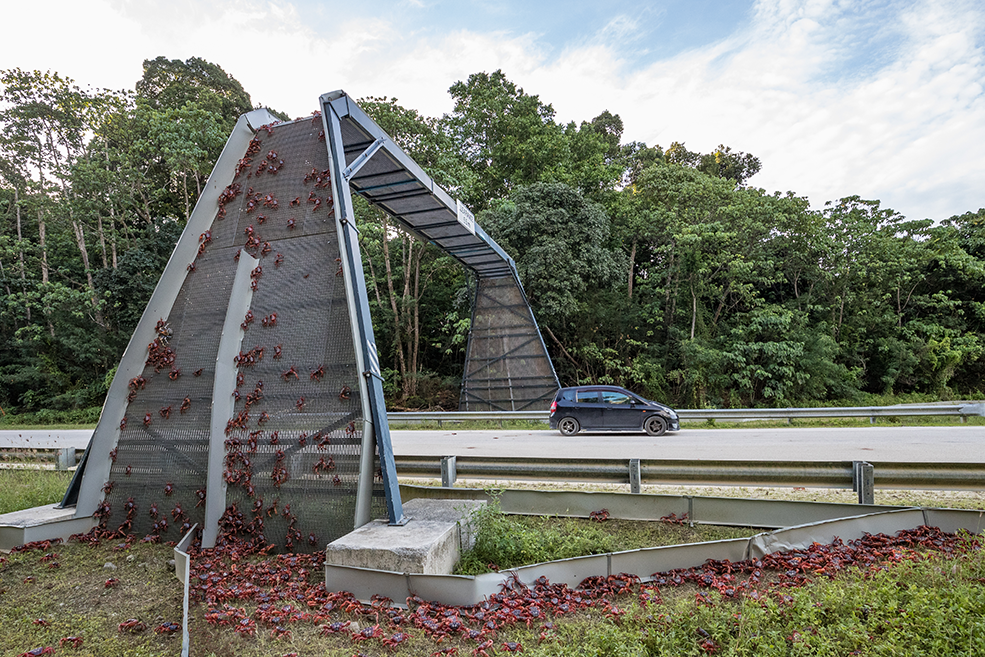
But the spectacle doesn't end when the crabs reach the sea. After breeding, each pregnant female crab releases up to 100,000 eggs into the water, which hatch immediately into swirling clouds of larvae, before trekking back to the jungle. Most of the crab larvae get swept away or eaten by various fish and other sea life, but come December and January, a wave of teeny, ant-sized baby crabs emerge back onto the beach to take the island once more.
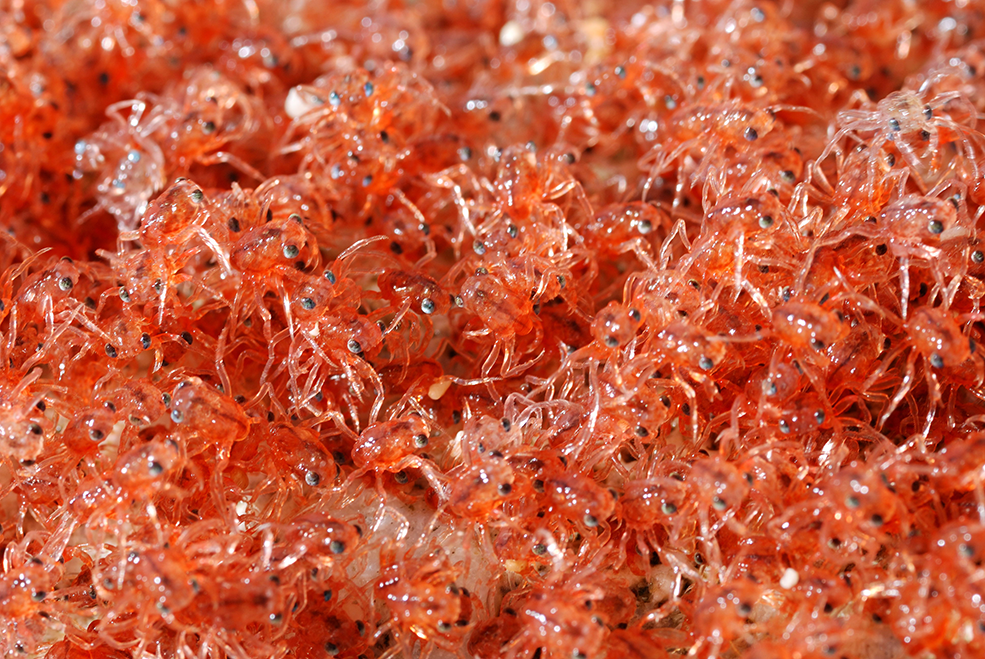

These little survivors then make the same trek their parents did from the water back to the shady inner-island paradise where they'll live out the rest of their lives into adulthood.
Christmas Island's crab migration and spawning have become a beloved tourist destination, but if you're hoping to experience this natural wonder in person, you'd best do so soon. The island's red crabs are under threat due to climate change and a human-introduced species of yellow crazy ants that have been rapidly decreasing the crustacean population for years.


A free daily email with the biggest news stories of the day – and the best features from TheWeek.com
Kelly Gonsalves is a sex and culture writer exploring love, lust, identity, and feminism. Her work has appeared at Bustle, Cosmopolitan, Marie Claire, and more, and she previously worked as an associate editor for The Week. She's obsessed with badass ladies doing badass things, wellness movements, and very bad rom-coms.
-
 What will the US economy look like in 2026?
What will the US economy look like in 2026?Today’s Big Question Wall Street is bullish, but uncertain
-
 Alaa Abd el-Fattah: should Egyptian dissident be stripped of UK citizenship?
Alaa Abd el-Fattah: should Egyptian dissident be stripped of UK citizenship?Today's Big Question Resurfaced social media posts appear to show the democracy activist calling for the killing of Zionists and police
-
 Biggest political break-ups and make-ups of 2025
Biggest political break-ups and make-ups of 2025The Explainer From Trump and Musk to the UK and the EU, Christmas wouldn’t be Christmas without a round-up of the year’s relationship drama
